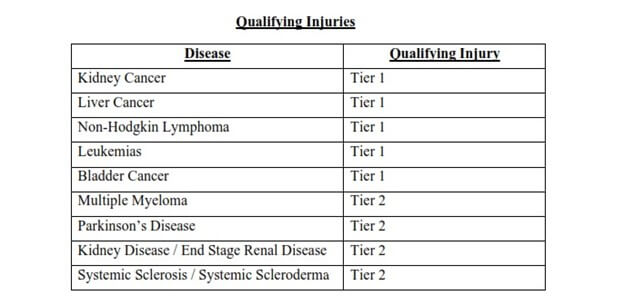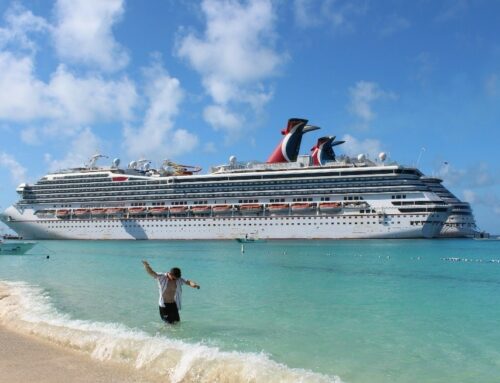The Camp Lejeune Justice Act Elective Option Explained
 Camp Lejeune, located in North Carolina, is one of the U.S. Marine Corps’ most important bases. However, for decades, the water supply at Camp Lejeune was contaminated with harmful chemicals; this led to the base becoming one of the largest and longest-lasting cases of water contamination in U.S. history. Between 1953 and 1987, an estimated 1 million people were exposed to drinking water laced with volatile organic compounds (VOCs), which are linked to many types of cancer and other health problems. The source of the contamination was located on base, was located at Camp Lejeune, and included industrial waste, fuel leaks, and a local dry cleaner that dumped chemicals into the groundwater. Given the concerns about these health impacts, the Camp Lejeune Justice Act (CLJA) was signed into law to offer justice to the victims. This law serves as a way to help the victims of the contamination seek compensation for the health problems strongly suspected to be caused by the toxic water at Camp Lejeune
Camp Lejeune, located in North Carolina, is one of the U.S. Marine Corps’ most important bases. However, for decades, the water supply at Camp Lejeune was contaminated with harmful chemicals; this led to the base becoming one of the largest and longest-lasting cases of water contamination in U.S. history. Between 1953 and 1987, an estimated 1 million people were exposed to drinking water laced with volatile organic compounds (VOCs), which are linked to many types of cancer and other health problems. The source of the contamination was located on base, was located at Camp Lejeune, and included industrial waste, fuel leaks, and a local dry cleaner that dumped chemicals into the groundwater. Given the concerns about these health impacts, the Camp Lejeune Justice Act (CLJA) was signed into law to offer justice to the victims. This law serves as a way to help the victims of the contamination seek compensation for the health problems strongly suspected to be caused by the toxic water at Camp Lejeune
The “Elective Option” (EO) is a new provision of the CLJA recently adopted by the U.S. Department of the Navy and the Department of Justice (DOJ) in an attempt to provide plaintiffs with pre-defined compensation based categorically on their illness type and length of exposure. The EO is a new settlement program intended to allow claimants to resolve certain CLJA claims more quickly and more efficiently than through the courts. This option is intended to be the alternative to the lengthy, expensive, and unpredictable process of a trial, which often requires the resolution of currently uncertain legal and factual issues.
What impact will this new settlement option have on the volume of new civil case filings under the CLJA? Rather than slowing this process down, the new settlement program actually appears to have prompted a spike in new cases. In the month before the settlement program (August 2023) only 50 new Camp Lejeune civil cases were filed. In the month after the program was announced, that number jumped up to 193, an increase of 300%.
While the Elective Option might seem straightforward and hassle-free, the reality is that this “one-size-fits-all” approach may not truly reflect the complexities and intricacies of an individual’s suffering. There’s a risk that the compensation may fall far short of what one could have secured through litigation, especially in cases with severe health impacts and significant secondary consequences like job loss, chronic care, or extreme emotional distress.
The Elective Option Grid
The EO uses an “Elective Option Grid” based on two main criteria: (1) the strength of the evidence providing the causal link between illnesses and contaminants found in the Camp Lejeune water, and (2) the duration of exposure. Illnesses with evidence at the “equipoise and above” level are classified as “Tier 2”, while those with “sufficient” evidence are “Tier 1”. Exposure durations are grouped into three groups: (1) 30-364 days; (2) 1-5 years; and (3) over 5 years.

In addition, claims that show a Qualifying Injury resulting in death will be offered an additional $100,000. Accordingly, the maximum EO offer is, at this point, $550,000. As a major incentive, the EO states hose who accept an EO settlement can expect to receive compensation in 60 days or less.
Qualifying Injuries are divided into two “Tiers,” as listed below:

The EO has the same original specific criteria for individuals seeking claims related to their exposure at Camp Lejeune. To be eligible, a person must have an exposure duration of at least 30 days (which do not need to be consecutive) between August 1, 1953, and December 31, 1987. The duration is calculated from the time the claimant either resided, were present, or were employed at Camp Lejeune. (An exception exists for prenatal exposure; if a mother lived or worked at Camp Lejeune for a minimum of 30 days within the nine months before her child’s birth, the child is eligible).
When determining settlement offers, claimants with similar exposure histories and injuries, backed by comparable scientific evidence of causation, will receive analogous offers. However, those diagnosed with diseases that the Agency for Toxic Substances and Disease Registry (ATSDR) strongly associates with the contamination, or those who endured longer terms of exposure, will be eligible for higher settlement offers. It’s crucial to note that these settlements don’t compare the severity of diseases, or consider the claimant’s financial or medical circumstances. Instead, they primarily assess the strength of the research evidence linking the disease to the exposure, as classified by the ATSDR. The lone exception in these groupings pertains to death-related claims.
Additional Requirements
There are a few more factors to consider in making a claim:
- Presentation Requirement: Claimants must display they have a qualifying injury and have met the required exposure duration. The claim must be correctly submitted to the Department of the Navy, as stipulated by section 804(h) of the CLJA, no later than August 10th, 2024.
- Onset Requirement: Injury should have been diagnosed or treated before August 10, 2022, since the CLJA is applicable only to injuries diagnosed or treated before this date.
- Latency Requirement: Diagnosis or treatment should occur at least two years after the initial exposure but not more than 35 years after the last exposure. This criterion simplifies the review process and, while claimants not meeting this requirement under the EO might face higher costs in proving the link between ailment and exposure, they are still free to make their case outside the EO’s provisions.
In order to meet the “Evidentiary Standard” demonstrating an injury that qualifies under the EO, claimants must provide medical documentation that they were diagnosed or treated for the relevant illness before August 10, 2022. This can be in the form of medical records, test results, treatment notes, billing details, death certificates, or a doctor’s letter. The documentation must be authentic, signed or certified by a doctor. If it is not possible to provide an original or certified copy, a sworn written statement explaining the reason, accompanied by an uncertified copy, is necessary.
To establish the “Duration of Exposure”, claimants need to prove that they (or their mothers, if the exposure was prenatal) lived or worked at Camp Lejeune for at least 30 days between August 1, 1953, and December 31, 1987. Acceptable evidence for this includes military service records such as a DD214, tax statements, driver’s license, pay slips, employment contracts, or other similar documents. If claiming exposure while living with a service member at Camp Lejeune, claimants can use that service member’s documentation if they can prove their relationship to that member through documents (like a marriage or birth certificate) Secondary evidence, such as sworn statements, is not generally accepted for this purpose, due to its presumably reduced reliability.
Claimants who previously received healthcare or disability benefits related to Camp Lejeune from the Veterans Association (VA) can use these benefits to confirm a Qualifying Injury, an Exposure Duration between 30 and 364 days, or both. Keep in mind that accepting an EO offer for a CLJA claim will NOT affect the claimant’s VA benefits. The VA will not assert a lien or offset over EO payments. Awards or settlements made outside of the EO or the CLJA may be offset by the value of VA benefits, however.
Lastly, if a “Qualifying Injury” led to a death, medical proof is required to indicate the illness played a role in the death. Suitable documentation may be a detailed death certificate or a letter from the treating physician of the deceased.
While the elective option in the Camp Lejeune Justice Act may seem like a convenient choice, victims must weigh their decisions carefully. Beyond the immediate concerns of compensation, there are broader implications to consider – justice, accountability, and the opportunity to tell your story.
Camp Lejeune water contamination is a serious and urgent matter that deserves attention and action. At the Herd Law Firm, PLLC, we support every man, woman, and child (including civilians) exposed to contaminants at Camp Lejeune, and believe you deserve quality and attentive legal representation. We are a Tomball law firm based in Houston, and are proud to be able to aid our veterans and their families in seeking restitution for their injuries. We are honored to have been entrusted by the VFW to handle these claims on behalf of veterans and their families. Contact us at the Herd Law Firm at 713-955-4299 or at Charles.herd@herdlawfirm.com to speak with us about the full spectrum of options you have, and make an informed choice.
Please note: with regard to the new Elective Option, all claims must be filed as separate lawsuits no later than August 10th, 2024.
More information is available at http://www.navy.mil/clja. Read about Public Elective Option Guidance here.
10/16/2023
Source: U.S. Department of the Navy
Read more about the Elective Option here: Public_Guidance_Elective_Option_CLJA.pdf (navy.mil)







